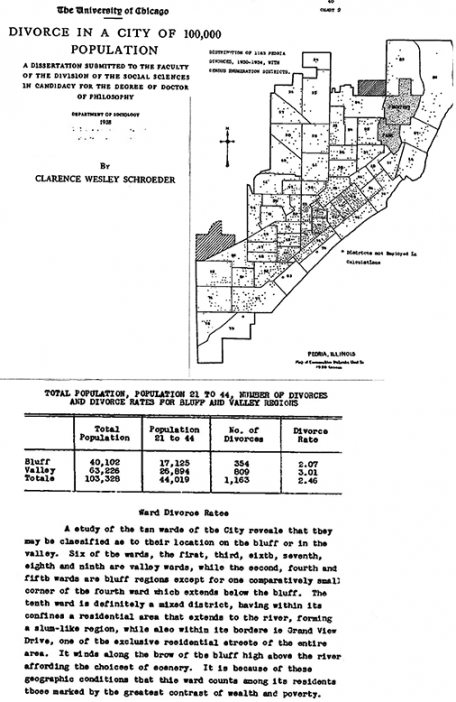In this 1939 dissertation on divorce in Peoria, sociologist Clarence Schroeder tried to discover why Peoria in 1930 had a divorce rate nearly twice the national average.
Schroeder began by reconstructing the world of Peoria. Statistics and other data for nearly 50 years of the city’s history were compiled, tabulated and analyzed to see if Peoria was somehow different than other American cities. Beyond the quantitative analysis, Schroeder aimed to probe into the underlying causes of divorce and how they related to couple’s economic, cultural and social positions.
What he discovered was that, in many ways, Peoria was a fairly average middle-American city, at least on paper. It had a slightly higher literacy rate than most cities, regular church membership, and a largely native-born, overwhelmingly white population.
Schroeder also found that divorce was happening at much higher rate in neighborhoods where the residents were poorer, such as Peoria’s “Valley.” In an age before the idea of the “no-fault” divorce, those who petitioned the court for divorce had to give a reason, and the main reason given was “abuse”: in this sense, Gertrude Pryor’s divorce from Buck for “extreme and repeated cruelty” was not unusual for the time.

